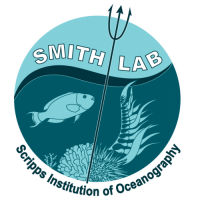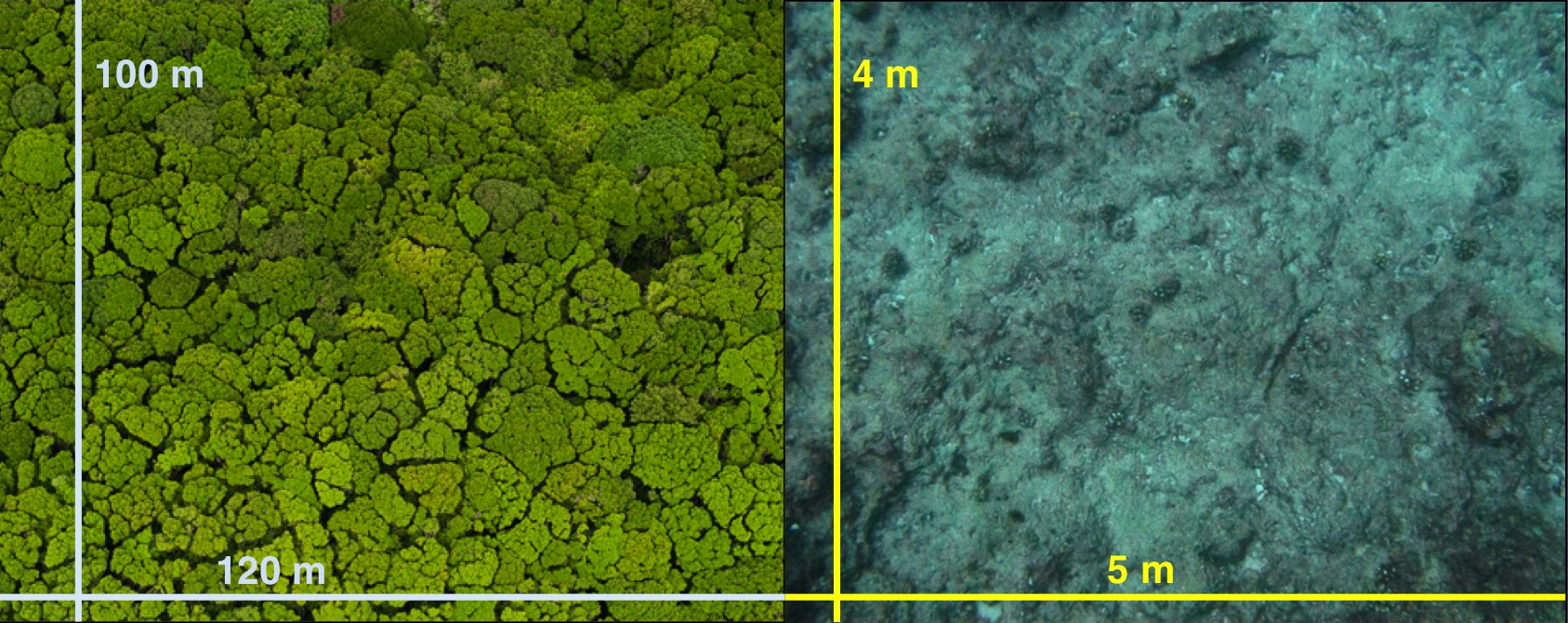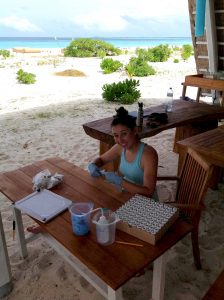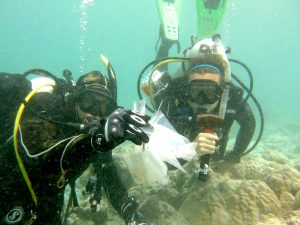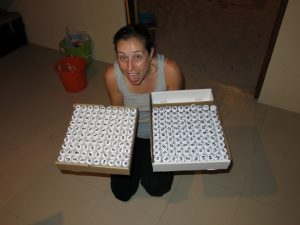Jill’s new paper, written with Jen and Levi, came out recently in the Marine Ecology Progress Series. Their paper, Quantifying scales of spatial variability in algal turf assemblages on coral reefs, describes how turf algae on a coral reef are variable over very small scales. Turf algae are a group of small (~ 1 cm tall) algae that grow like a fuzzy shag carpet. They are a common part of every coral reef in the world, but most people study them as a single homogenous entity. Jill, Levi and Jen argue that we should instead treat turf like a diverse, heterogeneous assemblage. For example, they found that patches turf algae separated by only a few centimeters apart are very different!
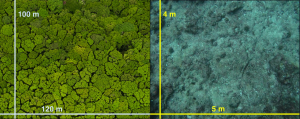
Just as a forest has more complexity than just its canopy (left), tiny turf algae on coral reefs (right) are diverse, complex, heterogeneous systems (photo credit, forest canopy: Pete Oxford, ILCP)
Think of turf like a forest. Looking down at a forest from above, you could say that it is 100% tree. That might be true, but you would be missing a lot of the interesting ecological detail: What species of trees? How tall are they? Are the different species clumped together or randomly spread out? What kinds of animals live in the forest? We take that same view of turf algae by describing how turf species, height, and density vary across space.
Jill and Levi collected these turf algae samples at the Korallionlab in the Maldives (Read more about their Maldives research in Jill’s previous blog post and an article about their work in the Union-Tribune). This paper is one of the chapters of Jill’s dissertation, which is all about turf algae on coral reefs. Stay tuned to learn more about the ecologically important, but usually overlooked, turf algae!

